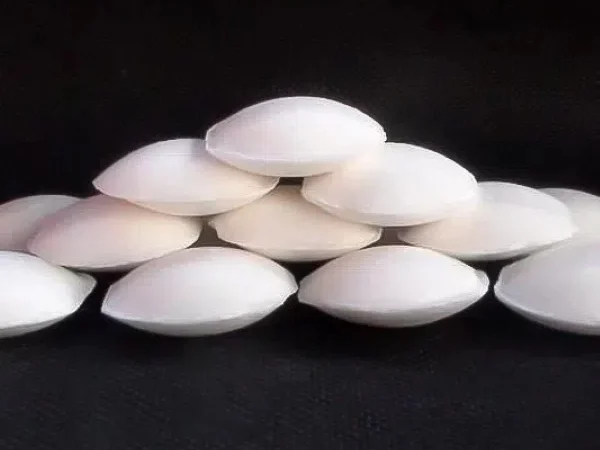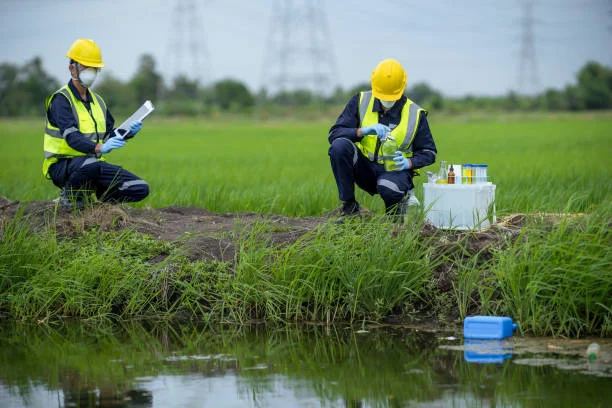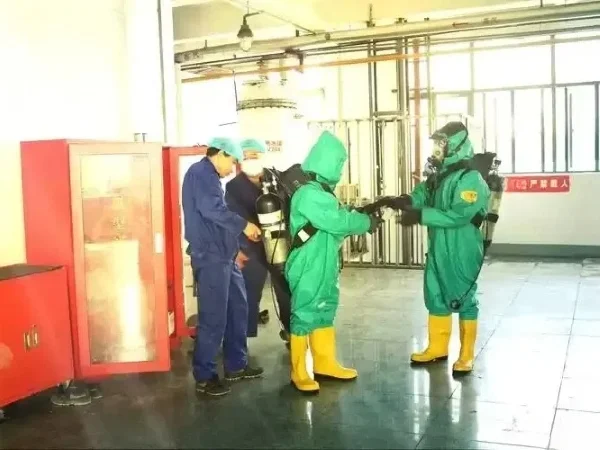
Introduction
Sodium cyanide is a highly toxic chemical widely used in various industrial processes such as mining, electroplating, and chemical synthesis. However, its improper handling and disposal can lead to severe environmental pollution and pose significant risks to human health and ecological systems. As a result, the development and application of effective Sodium cyanidePollution control technologies have become a crucial area of research and practice.
Traditional Treatment Methods for Sodium Cyanide Pollution
Alkaline Chlorination
Alkaline chlorination is one of the most commonly used methods for treating cyanide - containing wastewaters. In this process, chlorine or chlorine - containing compounds (such as sodium hypochlorite) are added to the wastewater under alkaline conditions. The reaction occurs in two steps. First, cyanide is oxidized to cyanogen chloride, and then the cyanogen chloride hydrolyzes to form cyanate. Finally, the cyanate ions are further hydrolyzed to produce ammonia and carbonates. The traditional alkaline chlorination process typically requires a high pH of around 10.5 and a high oxidation - reduction potential (ORP) of + 600 mV. However, it is a chemically intensive process, consuming a large amount of sodium hypochlorite. For example, approximately 23 gallons of 12.5% sodium hypochlorite solution are needed to destroy one ounce of cyanide.
Biological Treatment
Biological treatment of cyanide - containing wastewaters involves the use of specific microorganisms. Aerobic bacteria such as Pseudomonas, Alcaligenes, and Achromobacteria can oxidize cyanide to cyanate. Subsequently, the cyanate ion is biologically converted to ammonia and bicarbonate. This method is effective when the cyanide concentration in the wastewater is relatively low. However, it requires careful control of environmental conditions such as temperature, pH, and the presence of appropriate nutrients to ensure the growth and activity of the microorganisms.
Acidification Method
The acidification method is a traditional approach for treating high - concentration cyanide - containing wastewaters in industries like gold mining and cyanide electroplating. In this method, the wastewater is acidified to release hydrogen cyanide gas, which can then be recovered or further treated. This method has the advantage of being able to recover cyanide from the wastewater, but it requires careful handling of the released hydrogen cyanide gas to prevent environmental pollution and ensure safety.
New Technologies for Sodium Cyanide Pollution Control
Advanced Oxidation Processes (AOPs)
Advanced oxidation processes, such as ozone oxidation and ultraviolet (UV) - catalyzed oxidation, have shown great potential in the treatment of Sodium Cyanide - contaminated waters. Ozone oxidation can effectively decompose cyanide into less harmful substances. The ozone molecule reacts with cyanide, breaking the chemical bonds and converting it into more stable compounds. UV - catalyzed oxidation, on the other hand, often uses catalysts in combination with ultraviolet light and oxidants like hydrogen peroxide. For example, in the UV - H₂O₂ system, the ultraviolet light activates the hydrogen peroxide, generating highly reactive hydroxyl radicals that can rapidly degrade cyanide. These processes are generally more efficient and can achieve lower residual cyanide concentrations compared to traditional methods.
Nanotechnology - based Approaches
Nanotechnology is emerging as a promising field for improving cyanide pollution control. Nanomaterials, such as nanocatalysts, can enhance the reaction rates of cyanide degradation processes. For instance, certain metal - based nanocatalysts can selectively promote the oxidation of cyanide under milder conditions. Additionally, nanofiltration membranes can be used to separate cyanide and other contaminants from water. These membranes have pores in the nanometer range, allowing for the effective removal of small molecules and ions, including cyanide, while retaining valuable substances and reducing the volume of waste generated.
Application Cases of Sodium Cyanide Pollution Control Technologies
In the Mining Industry
In gold mining, where sodium cyanide is commonly used for gold extraction, pollution control technologies are of utmost importance. For example, some large - scale mining operations have adopted a combination of alkaline chlorination and biological treatment. First, the alkaline chlorination process is used to reduce the high - concentration cyanide in the tailings wastewater to a certain level. Then, the wastewater is further treated biologically to meet the strict environmental discharge standards. In some cases, new technologies like UV - catalyzed oxidation are also being trialed. Mines in environmentally sensitive areas are particularly motivated to adopt advanced and more effective pollution control technologies to minimize the impact on the surrounding ecosystems.
In Industrial Wastewater Treatment
Electroplating industries that use cyanide - based plating baths also generate significant amounts of cyanide - containing wastewater. Many modern electroplating plants have installed on - site wastewater treatment facilities. They often use a series of treatment steps, starting with the precipitation of heavy metals associated with cyanide complexes, followed by the destruction of free cyanide using methods such as alkaline chlorination or advanced oxidation processes. Some plants have also implemented continuous monitoring systems to ensure that the treated wastewater meets the regulatory requirements before being discharged into the sewer system or surface waters.
Challenges and Future Perspectives
Despite the availability of various sodium cyanide pollution control technologies, several challenges remain. One of the main challenges is the high cost associated with some advanced treatment technologies, especially for small - and medium - sized enterprises. Additionally, the treatment of complex cyanide - containing wastewaters, which may contain a mixture of cyanide compounds and other contaminants, requires more efficient and versatile treatment methods.
Looking to the future, further research and development are needed to improve the efficiency and cost - effectiveness of existing technologies. This could involve the optimization of reaction conditions, the development of more stable and efficient catalysts, and the integration of different treatment processes. Moreover, the exploration of new and innovative treatment concepts, such as the use of genetically engineered microorganisms for enhanced cyanide degradation or the application of novel materials with unique properties for cyanide removal, holds great promise for more effective sodium cyanide pollution control in the long run.
In conclusion, the research and application of sodium cyanide pollution control technologies are crucial for protecting the environment and human health. The continuous improvement and innovation of these technologies will play a vital role in sustainable industrial development and environmental protection.
- Random Content
- Hot content
- Hot review content
- Toxicity Assessment of Sodium Cyanide and Relevant Hazard Prevention Measures
- Industrial concentrated nitric acid 55%-68%
- Collector BLK-301/Composite Flotating Active Matter ≥60%
- Oxalic acid for mining 99.6%
- Dodecylbenzenesulfonic acid
- Phosphoric Acid 85% (Food grade)
- Pharmaceutical Grade Zinc Acetate
- 1Discounted Sodium Cyanide (CAS: 143-33-9) for Mining - High Quality & Competitive Pricing
- 2Sodium Cyanide 98% CAS 143-33-9 gold dressing agent Essential for Mining and Chemical Industries
- 3Sodium Cyanide 98%+ CAS 143-33-9
- 4Anhydrous Oxalic acid 99.6% Industrial Grade
- 5Soda Ash Dense / Light 99.2% Sodium Carbonate Washing Soda
- 6Oxalic acid for mining 99.6%
- 7Calcium hydroxide Industrial Grade 90%
- 1Sodium Cyanide 98% CAS 143-33-9 gold dressing agent Essential for Mining and Chemical Industries
- 2High Quality 99% Purity of Cyanuric chloride ISO 9001:2005 REACH Verified Producer
- 3 High-Quality Sodium Cyanide for Leaching
- 4Powdery emulsion explosive
- 5Industry Grade Electron grade 98% Sulfuric Acid H2SO4 Sulphuric Acid Battery Acid Industrial Sulfuric Acid
- 6Colloidal emulsion explosive
- 7sodium hydrosulfide 70% flakes used Mining Industry












Online message consultation
Add comment: